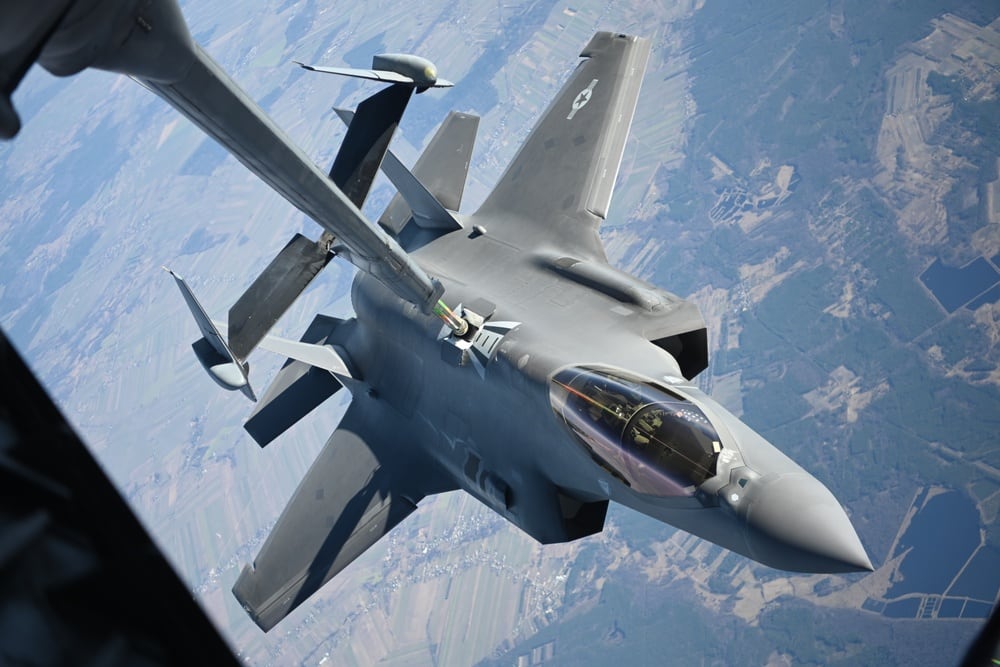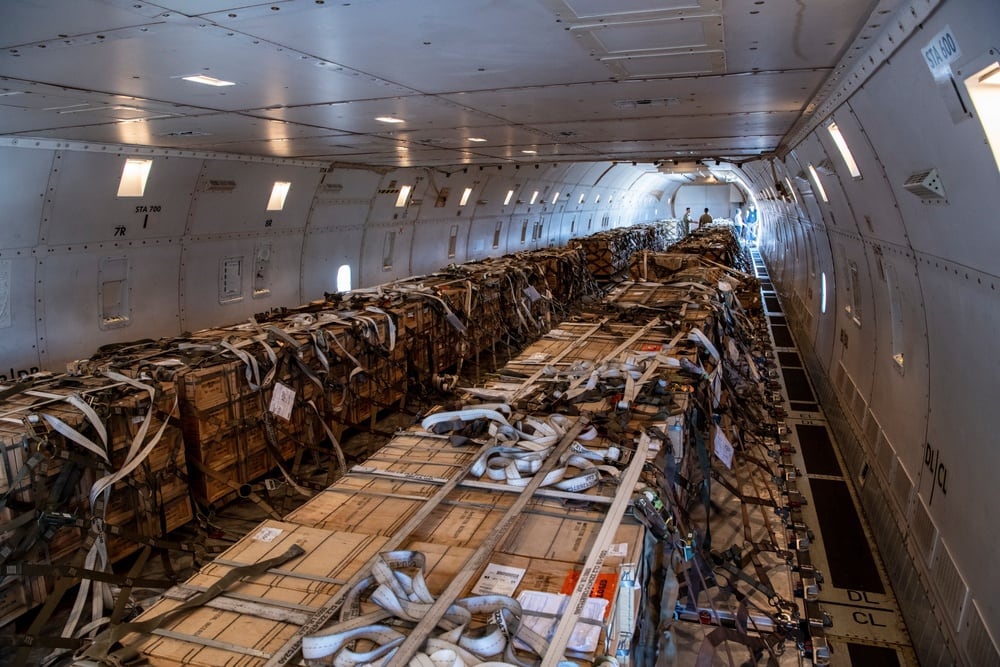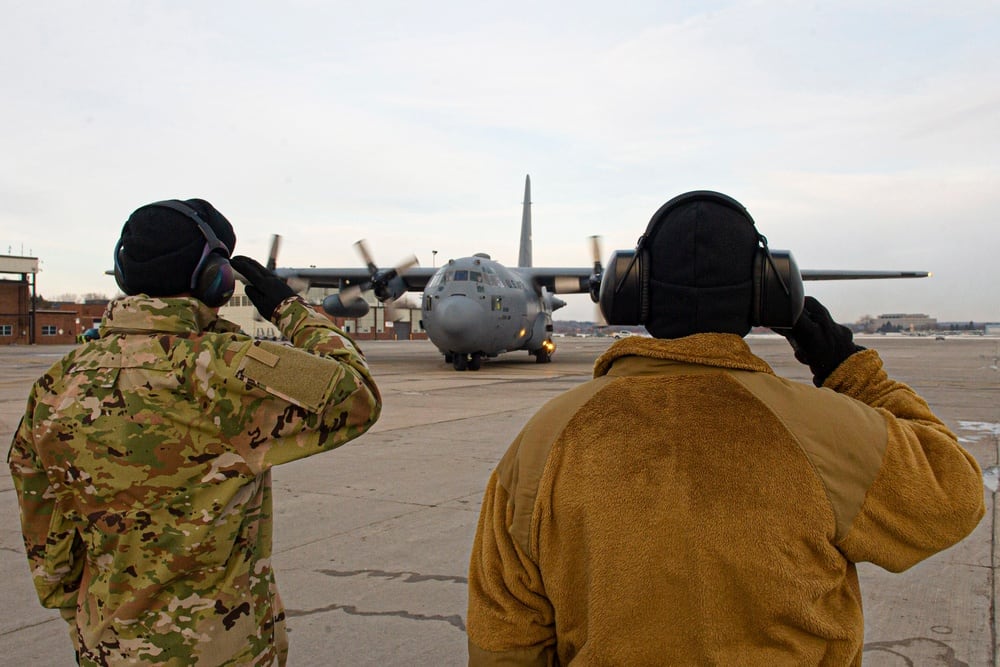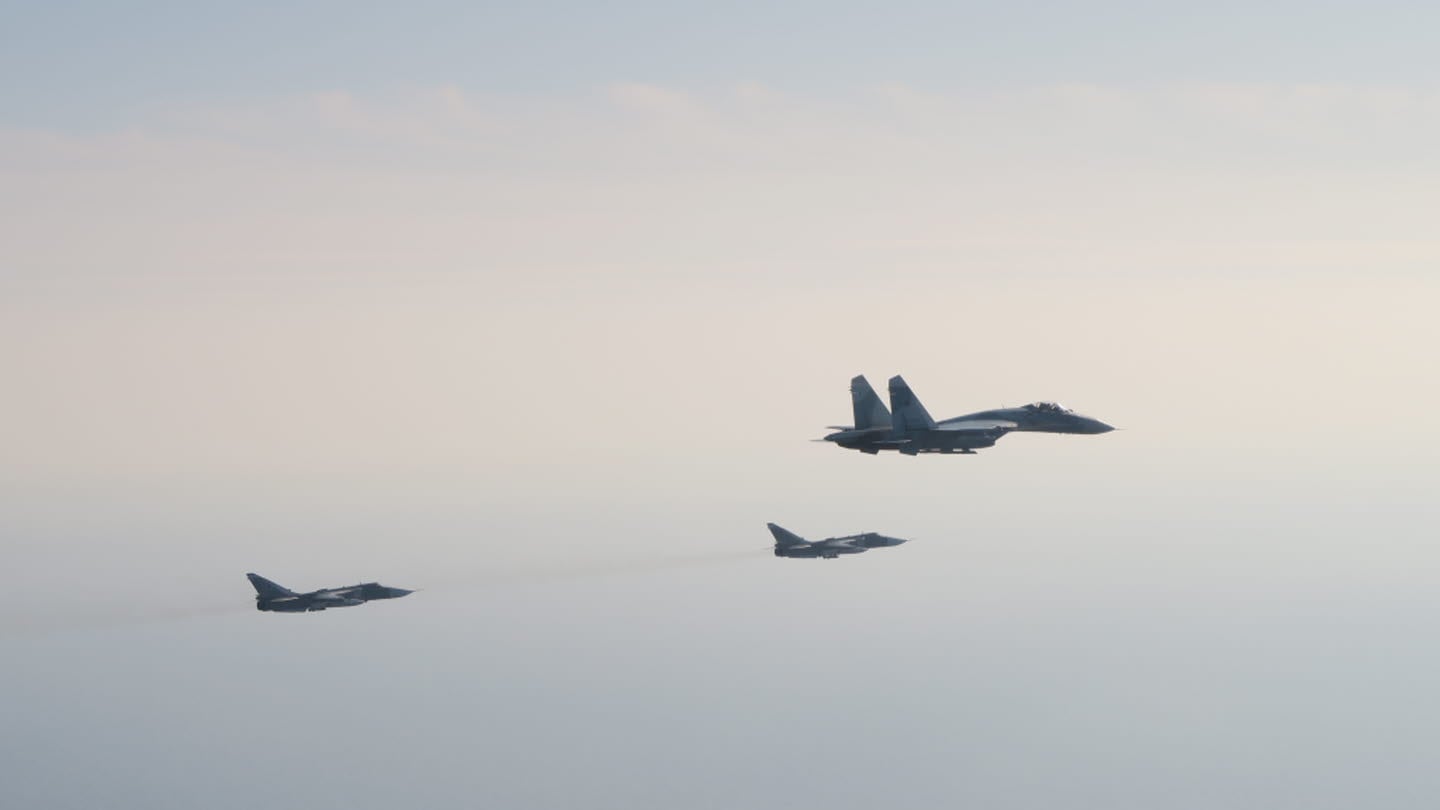NATO is building up its defenses in Eastern Europe to fend off Russian aggression in a new effort it calls “air shielding.”
The 30-country transatlantic alliance has long flown “air policing” missions that dispatch fighter jets to keep unfriendly aircraft at bay. Air shielding, however, began in response to Russia’s invasion of Ukraine, a neighbor it shares with NATO nations.
“NATO air shielding is an increased air and missile defense posture along the alliance’s eastern flank, implemented in the wake of Russia’s war on Ukraine. It is purely defensive,” a NATO military official told Air Force Times on Monday.
The policy brings together disparate allied air and missile defense units under NATO’s command, rather than relying on them in a more reactive, piecemeal fashion.
“It will provide a near-seamless shield from the Baltic to the Black Sea, ensuring NATO allies are better able to safeguard and protect alliance territory, populations and forces,” the alliance said.
Organization leaders say that Russia’s unprovoked assault on the former Soviet territory, now in its sixth month, has fundamentally altered European security. Stronger defenses will remain in place for the long run as a result, said Allied Air Command deputy commander Lt. Gen. Pascal Delerce in a July 21 press release.
As fighting continues, NATO is concerned about errant missiles straying into its territory and about the manned combat aircraft and drones flying near its borders.
“This increases the air and missile threat to NATO territory and populations, primarily due to potential miscalculation or loss of guidance or control,” the organization said July 28.
RELATED

Under Article 5 of the group’s founding treaty, an attack on one ally is seen as an attack on all allies.
Tom Karako, a missile defense expert at the Center for Strategic and International Studies in Washington, believes it indicates growing worries about an intentional Russian attack elsewhere in Europe, too.
Multiple American and European missile defense units have arrived in countries bordering Russia or Ukraine over the past few months. Air shielding deployments can last up to several months at air bases and other locations across Eastern Europe, the NATO official said.
The United States, Germany and the Netherlands have set up Patriot anti-missile systems in Slovakia and Poland; France brought its “Mamba” surface-to-air missile defense system to Romania; and Spain is operating its National Advanced Surface-to-Air Missile System in Latvia. The equipment can take out cruise and ballistic missiles as well as manned and unmanned aircraft.
“All of these systems have been added this year,” the military official confirmed.
RELATED

Still, it’s far short of the allied defensive buildup during the Cold War, Karako said. The focus on advanced air and missile defenses has waned as the U.S. instead prioritized counterterrorism operations for decades.
“We’re now seeing just how disproportionate our air defense investments have been relative to the threat when it becomes palpable,” he said. “A small number of air defenses over the eastern flank is, in the face of a real threat, astonishingly limited.”
Additional fighter jets are bolstering eastern defenses as well. The U.S. recently sent its F-35A Lightning II jets from Spangdahlem Air Base, Germany, to Estonia, and F-22 Raptor fighters from Joint Base Elmendorf-Richardson, Alaska, to Poland as part of the expanding mission.
“The Raptor performs both air-to-air and air-to-ground missions,” the Air Force said in a June 27 release. “It cannot be matched by any known or projected fighter aircraft, making it a highly strategic platform to support NATO air shielding.”
RELATED

American F/A-18 jets and Czech Gripen fighters are also currently deployed in support of air shielding, the NATO official said. German, Hungarian and Italian fighters are patrolling the skies over the Baltic states.
“This comes on top of other NATO deployments, including our standing air policing missions, and air and missile defense elements deployed to support our battlegroups,” the official said. “Our allied fighters are on alert 24/7 to respond to aircraft which may pose a threat in or near allied airspace or challenge the integrity of NATO airspace.”
At the beginning of March, more than 100 combat aircraft were assigned to air policing shifts — almost twice as many as there were in December.
NATO did not provide an update on how many aircraft are tasked with air policing or shielding, or how many interactions Russian and allied jets have recently had.
Air policing planes identify and address renegade aircraft, such as when allied pilots intercept Russian military jets that veer near their airspace or if a civilian plane is unresponsive or hijacked. They’re not allowed to fire unless fired upon when flying over a foreign country; most interdictions take place without incident and do not enter allied airspace.
RELATED

Russia’s war in Ukraine, plus its threats against other non-NATO countries, spurred Finland and Sweden to ask to join the alliance in May. Their membership will become official once each allied country individually approves the decision.
Ukraine, Bosnia and Herzegovina, and Georgia also want to join.
The United Nations has recorded more than 12,500 civilian casualties in Ukraine, including over 5,000 deaths, since the war began Feb. 24. It believes the true toll is much higher.
U.S. intelligence estimates another 15,000 Russian troops have died, while the Ukrainian government said earlier this summer that up to 200 Ukrainian service members were being killed each day.
Rachel Cohen is the editor of Air Force Times. She joined the publication as its senior reporter in March 2021. Her work has appeared in the Washington Post, the Frederick News-Post (Md.), Air and Space Forces Magazine, Inside Defense, Inside Health Policy and elsewhere.





